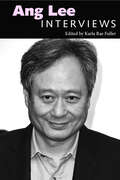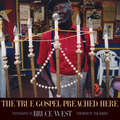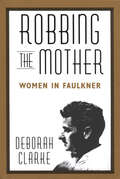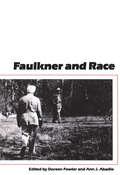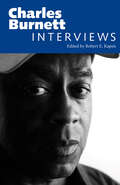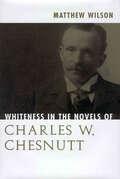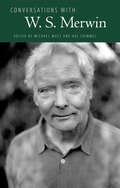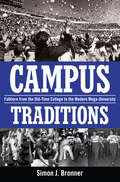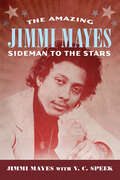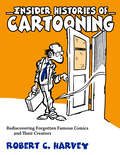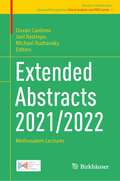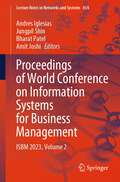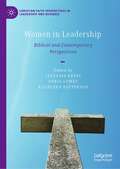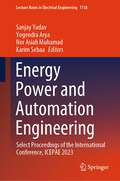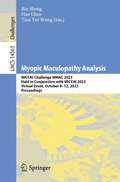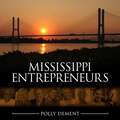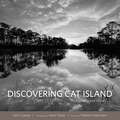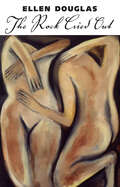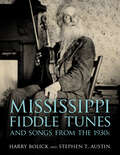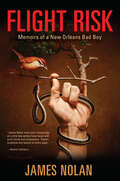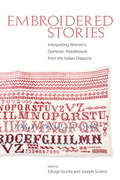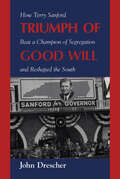- Table View
- List View
Ang Lee: Interviews (Conversations with Filmmakers Series)
by Karla Rae FullerTaiwanese born, Ang Lee (b. 1954) has produced diverse films in his award-winning body of work. Sometimes working in the West, sometimes in the East, he creates films that defy easy categorization and continue to amaze audiences worldwide. Lee has won an Academy Award two times for Best Director--the first Asian to win--for films as different as a small drama about gay cowboys in Brokeback Mountain (2005), and the 3D technical wizardry in Life of Pi (2012). He has garnered numerous accolades and awards worldwide.Lee has made a broad range of movies, including his so-called "Father Knows Best" trilogy made up of his first three films: Pushing Hands (1992), The Wedding Banquet (1993), and Eat Drink Man Woman (1994), as well as 1970s period drama The Ice Storm (1997), martial arts film Crouching Tiger, Hidden Dragon (2000), superhero blockbuster Hulk (2003), and hippie retro trip Taking Woodstock (2009).Thoughtful and passionate, Lee humbly reveals here a personal journey that brought him from Taiwan to his chosen home in the United States as he struggled and ultimately triumphed in his quest to become a superb filmmaker. Ang Lee: Interviews collects the best interviews of this reticent yet bold figure.
The True Gospel Preached Here
by Bruce WestBruce West's color photographs document the spiritual and creative work of a self-proclaimed preacher, artist, architect, the Reverend H. D. Dennis, and his wife, Margaret, in Vicksburg, Mississippi. This book explores the fantastic world of the elderly couple who devoted more than twenty years of their lives to converting Margaret's Grocery store into a one-of-a-kind nondenominational church. Guided by visions from God, their elaborate transformation of Margaret's Grocery involved the construction of several towers, the creation of the Ark of the Covenant containing tablets inscribed with the Ten Commandments, and new religious iconography. A sign at the entrance announced: "Welcome Jews and Gentile This Church Open 24 Hours a Day." Another sign promised: "The True Gospel Preached Here." Bands of high-gloss red, white, blue, green, yellow, and pink paint covered the towers and exterior. Religious artifacts, Mardi Gras beads, plastic flowers, hubcaps, and flashing Christmas lights encrusted the interior walls and ceilings and an old school bus. The Reverend used his church as a roadside attraction to lure seekers so that he could deliver fiery sermons and orations about the need to "practice living perfectly" and the ceaseless pursuit of spiritual wisdom.The product of twenty years of labor and multiple site visits, West's photographs are both intimate and transparent, tenderly revealing the Reverend and Margaret's love of God and for one another, their commitment to their work, and their shared transformation while aging together. The images offer unique insights into the role of spirituality in southern folk art and creativity and the joys and demands of an ascetic and inspired life.
Robbing The Mother: Women in Faulkner
by Deborah ClarkeWilliam Faulkner claimed that it may be necessary for a writer to “rob his mother,” should the need arise. “If a writer has to rob his mother, he will not hesitate; the ‘Ode on a Grecian Urn’ is worth any number of old ladies,” he remarked. This study of Faulkner's paradoxical attitude toward women, particularly mothers, will stimulate debate and concern, for his novels are shown here to have presented them as both a source and a threat to being and to language. “My reading of Faulkner,” the author says, “attempts more than an identification of female stereotypes and an examination of misogyny, for Faulkner, who almost certainly feared and mistrusted women, also sees in them a mysterious, often threatening power, which is often aligned with his own creativity and the grounds of his own fiction.” Drawing on both American and French feminist criticism, Robbing the Mother explores Faulkner's artistic vision through the maternal influence in such works as The Sound and the Fury; As I Lay Dying; Sanctuary; Absalom, Absalom!; The Hamlet; Light in August; and The Wild Palms.
Faulkner and Race (Faulkner and Yoknapatawpha Series)
by Doreen FowlerWith contributions by Eric J. Sundquist, Craig Werner, Blyden Jackson, Thadious Davis, Pamela J. Rhodes, Walter Taylor, Noel Polk, James A. Snead, Philip M. Weinstein, Lothar Hönnighausen, Frederick R. Karl, Hoke Perkins, Sergei Chakovsky, Michael Grimwood, and Karl F. ZenderThe essays in this volume address William Faulkner and the issue of race. Faulkner resolutely has probed the deeply repressed psychological dimensions of race, asking in novel after novel the perplexing question: what does blackness signify in a predominantly white society? However, Faulkner's public statements on the subject of race have sometimes seemed less than fully enlightened, and some of his black characters, especially in the early fiction, seem to conform to white stereotypical notions of what black men and women are like. These essays, originally presented by Faulkner scholars, black and white, male and female, at the 1986 Faulkner and Yoknapatawpha Conference, the thirteenth in a series of conferences held on the Oxford campus of the University of Mississippi, explore the relationship between Faulkner and race.
Charles Burnett: Interviews (Conversations with Filmmakers Series)
by Robert E. KapsisCharles Burnett (b. 1944) is a groundbreaking African American filmmaker and one of this country’s finest directors, yet he remains largely unknown. His films, most notably Killer of Sheep (1977) and To Sleep with Anger (1990), are considered classics, yet few filmgoers have seen them or heard of Burnett. The interviews in this volume explore this paradox and collectively shed light on the work of a rare film master whose stories bring to the screen the texture and poetry of life in the black community.The best qualities of Burnett’s films-rich characterizations, morally and emotionally complex narratives, and intricately observed tales of African American life-are precisely the things that make his films a tough sell in the mass marketplace. As many of the interviews reveal, Hollywood has been largely inept in responding to this marketing challenge. “It takes an extraordinary effort to keep going,” Burnett told Terrence Rafferty in 2001, “when everybody’s saying to you, ‘No one wants to see that kind of movie,’ or ‘There’s no black audience.’” All the interviews selected for this volume—spanning more than three decades of Burnett’s directorial career, including his recent work—examine, in various degrees, Burnett’s status as a true independent filmmaker and explore his motivation for making films that chronicle the black experience in America.
Whiteness in the Novels of Charles W. Chesnutt
by Matthew WilsonCharles W. Chesnutt (1858–1932), critically acclaimed for his novels, short stories, and essays, was one of the most ambitious and influential African American writers of the late nineteenth and early twentieth centuries. Today recognized as a major innovator of American fiction, Chesnutt is an important contributor to deromanticizing trends in post–Civil War southern literature, and a singular voice among turn-of-the-century realists who wrote about race in American life. Whiteness in the Novels of Charles W. Chesnutt is the first study to focus exclusively on Chesnutt's novels. Examining the three published in Chesnutt's lifetime—The House Behind the Cedars, The Marrow of Tradition, and The Colonel's Dream—as well as his posthumously published novels, this study explores the dilemma of a black writer who wrote primarily for a white audience. Throughout, Matthew Wilson analyzes the ways in which Chesnutt crafted narratives for his white readership and focuses on how he attempted to infiltrate and manipulate the feelings and convictions of that audience. Wilson pays close attention to the genres in which Chesnutt was working and also to the social and historical context of the novels. In articulating the development of Chesnutt's career, Wilson shows how Chesnutt's views on race evolved. By the end of his career, he felt that racial differences were not genetically inherent, but social constructions based on our background and upbringing. Finally, the book closely examines Chesnutt's unpublished manuscripts that did not deal with race. Even in these works, in which African Americans are only minor characters, Wilson finds Chesnutt engaged with the conundrum of race and reveals him as one of America's most significant writers on the subject.
Conversations with W. S. Merwin (Literary Conversations Series)
by Michael Wutz and Hal CrimmelConversations with W. S. Merwin is the first collection of interviews with former United States Poet Laureate W. S. Merwin (b. 1927). Spanning almost six decades of conversations, the collection touches on such topics as Merwin's early influences (Robert Graves and Ezra Pound), his location within the twin poles of Walt Whitman and Henry David Thoreau, and his extraordinary work as a translator, as well as his decades-long interest in environmental conservation. Anticipating the current sustainability movement and the debates surrounding major and minor literatures, Merwin was, and still is, a visionary.He is among the most distinguished poets, translators, and thinkers in the United States. A major link between the period of literary modernism and its contemporary extensions, Merwin has been a force in American letters for many decades, and his translations from the Spanish, French, Italian, Japanese, and other languages have earned him unanimous praise and admiration. Merwin also wrote at the forefront of literature's environmental advocacy and early on articulated concerns about ecology and sustainability.Conversations with W. S. Merwin offers insight into the various dimensions of Merwin's thought by treating his interviews as a self-standing category in his oeuvre. More than casual narratives that interpret the occasional poem or relay an occasional experience, they afford literary and cultural historians a view into the larger throughlines of Merwin's thinking.
Campus Traditions: Folklore from the Old-Time College to the Modern Mega-University
by Simon J. BronnerFrom their beginnings, campuses emerged as hotbeds of traditions and folklore. American college students inhabit a culture with its own slang, stories, humor, beliefs, rituals, and pranks. Simon J. Bronner takes a long, engaging look at American campus life and how it is shaped by students and at the same time shapes the values of all who pass through it. The archetypes of absent-minded profs, fumbling jocks, and curve-setting dweebs are the stuff of legend and humor, along with the all-nighters, tailgating parties, and initiations that mark campus tradition—and student identities. Undergraduates in their hallowed halls embrace distinctive traditions because the experience of higher education precariously spans childhood and adulthood, parental and societal authority, home and corporation, play and work. Bronner traces historical changes in these traditions. The predominant context has shifted from what he calls the “old-time college,” small in size and strong in its sense of community, to mass society’s “mega-university,” a behemoth that extends beyond any campus to multiple branches and offshoots throughout a state, region, and sometimes the globe. One might assume that the mega-university has dissolved collegiate traditions and displaced the old-time college, but Bronner finds the opposite. Student needs for social belonging in large universities and a fear of losing personal control have given rise to distinctive forms of lore and a striving for retaining the pastoral “campus feel” of the old-time college. The folkloric material students spout, and sprout, in response to these needs is varied but it is tied together by its invocation of tradition and social purpose. Beneath the veil of play, students work through tough issues of their age and environment. They use their lore to suggest ramifications, if not resolution, of these issues for themselves and for their institutions. In the process, campus traditions are keys to the development of American culture.
The Amazing Jimmi Mayes: Sideman to the Stars (American Made Music Series)
by Jimmi MayesAssociation of Recorded Sound Collections Awards for ExcellenceBest Research in Recorded Blues, Hip-Hop, Rhythm & Blues – Certificate of Merit (2014)For more than fifty years, Chicago drummer Jimmi Mayes served as a sideman behind some of the greatest musicians and musical groups in history. He began his career playing the blues in the juke joints of Mississippi, sharpened his trade under the mentorship of drum legends Sam Lay and Fred Below in the steamy nightclubs of south Chicago, and hit it big in New York City behind such music legends as Tommy Hunt from the Flamingos, Marvin Gaye, and James Brown.Mayes played his drums behind blues giants Little Walter Jacobs, Jimmy Reed, Robert Junior Lockwood, Earl Hooker, Junior Wells, Pinetop Perkins, and Willie "Big Eyes" Smith. He lived for a while with Motown sensation Martha Reeves and her family and traveled with the Shirelles and the Motown Review. Jimi Hendrix was one of Mayes's best friends, and they traveled together with Joey Dee and the Starliters in the mid-1960s.Mayes lived through racial segregation, the civil rights movement of the 1960s, the integration of rock bands, and the emergence of Motown. He personally experienced the sexual and moral revolutions of the sixties, was robbed of his musical royalties, and survived a musical drought. He's been a pimp and a drug pusher--and lived to tell the tale when so many musicians have not. This sideman to the stars witnessed music history from the best seat in the house--behind the drum set.
Insider Histories of Cartooning: Rediscovering Forgotten Famous Comics and Their Creators
by Robert C. HarveyMany fans and insiders alike have never heard of Bill Hume, Bailin' Wire Bill, Abe Martin, AWOL Wally, the Texas History Movies, or the Weatherbird at the St. Louis Post-Dispatch. And many insiders do not know why we call comic books “comics” even though lots of them are not at all funny. Robert C. Harvey, cartoonist and a veteran comics critic, author of several histories of comics and biographies of cartoonists, tells forgotten stories of a dozen now obscure but once famous cartoonists and their creations. He also includes accounts of the cartooning careers of a groundbreaking African American and a woman who broke into an industry once dominated by white men. Many of the better-known stories in some of the book's fourteen chapters are wrapped around fugitive scraps of information that are almost unknown. Which of Bill Mauldin's famous duo is Willie? Which is Joe? What was the big secret about E. Simms Campbell? Who was Funnyman? And why? And some of the pictures are rare, too. Hugh Hefner's cartoons, Kin Hubbard's illustrations for Short Furrows, Betty Swords’s pictures for the Male Chauvinist Pig Calendar of 1974, the Far East pin-up cartoon character Babysan, illustrations for Popo and Fifina, and Red Ryder's last bow.
Extended Abstracts 2021/2022: Methusalem Lectures (Trends in Mathematics #3)
by Duván Cardona Joel Restrepo Michael RuzhanskyThis volume presents modern developments in analysis, PDEs and geometric analysis by some of the leading worldwide experts, prominent junior and senior researchers who were invited to be part of the Ghent Analysis & PDE Center Methusalem Seminars from 2021 to 2022. The contributions are from the speakers of the Methusalem Colloquium, Methusalem Junior Seminar and Geometric Analysis Seminar. The volume has two main topics: 1. Analysis and PDEs. The volume presents recent results in fundamental problems for solving partial integro-differential equations in different settings such as Euclidean spaces, manifolds, Banach spaces, and many others. Discussions about the global and local solvability using micro-local and harmonic analysis methods, studies of new techniques and approaches arising from a physical perspective or the mathematical point of view have also been included. Several connected branches arising in this regard are shown. 2. Geometric analysis. The volume presents studies of modern techniques for elliptic and subelliptic PDEs that in recent times have been used to establish new results in differential geometry and differential topology. These topics involve the intrinsic research in microlocal analysis, geometric analysis, and harmonic analysis abroad. Different problems having relevant geometric information for different applications in mathematical physics and other problems of classification have been considered.
Fungi Bioactive Metabolites: Integration of Pharmaceutical Applications
by Sunil Kumar Deshmukh Jacqueline Aparecida Takahashi Sanjai SaxenaThis book presents the exploration and exploitation of various bioactive metabolites obtained from fungi isolated from diverse habitats for pharmaceutical applications. Various fungal sources have been brought under one umbrella ranging from endophytes, marine fungi, endolichenic fungi to fungi existing in the extremophilic conditions like desert and Antarctica and Artic environment. The book tries to cover maximally the range of the pharmaceutical applications wherein these bioactive agents from fungi have been exploited or are in the clinical pipelines and primarily include antibacterial, antifungal, antibiofilm, anticancer, antioxidant, autoimmunological, anti-inflammatory, and anti-thrombotic diseases. The book further emphasizes on the novel strategies to screen or enhance secondary metabolite production. Some other topics includes peptides, nonpeptides drugs, pigments, and enhancement of production of Echinocandin and Kojic acid. The role of bioinformatics in drug discovery and biotransformations have also been discussed. This book is going to be a comprehensive treatise and a valuable source for mycologists, biotechnologists, microbiologists, biotechnologists, and undertaking research in pharmaceutical sector as well as academia in setting up their research aspirations for using fungi in the process of drug discovery and development.
Proceedings of World Conference on Information Systems for Business Management: ISBM 2023, Volume 2 (Lecture Notes in Networks and Systems #834)
by Andres Iglesias Jungpil Shin Bharat Patel Amit JoshiThis book includes selected papers presented at World Conference on Information Systems for Business Management (ISBM 2023), held in Bangkok, Thailand, during September 7–8, 2023. It covers up-to-date cutting-edge research on data science, information systems, infrastructure and computational systems, engineering systems, business information systems, and smart secure systems.
Wege agiler Führung – mit Sinn: Praktische Grundlagen für lebendige Organisationen (essentials)
by Bernd Ahrendt Nina Bürklin Paul M. OstbergIn diesem essential finden Sie Antworten auf existentielle Fragen zur aktuellen und zukunftsfähigen agilen Führung in Organisationen, insbesondere:Was zeichnet agile Führung aus? Wozu die Unterscheidung von „doing agile“ und „being agile“? Wie können agile Organisationen zu lebendigen Wertegemeinschaften werden?Welche Rolle spielt das Menschenbild und die Bedeutung gelebter Werte als gemeinsame Spielregeln?Wie ist Sinn-Findung im Unternehmen und bei der individuellen Arbeit möglich?
Women in Leadership: Biblical and Contemporary Perspectives (Christian Faith Perspectives in Leadership and Business)
by Stefanie Ertel Doris Gomez Kathleen PattersonThis book offers a biblically-based and research-centered exploration of the unique and important role of women in leadership across multiple domains. Divided into two sections, the chapters begin by examining biblical examples of women in leadership, such as Esther and the woman of Proverbs 31, and passages focused on women, such as 1 Timothy 2 and Romans 16, before presenting contemporary perspectives with discussions on topics such as submission, DEI, and work-life balance. Taking a neutral position not siding with feminist or patriarchal extremes, this book will contribute to debates on leadership and gender in the fields of organizational behaviour, HRM, I/O psychology, and gender studies.
Energy Power and Automation Engineering: Select Proceedings of the International Conference, ICEPAE 2023 (Lecture Notes in Electrical Engineering #1118)
by Sanjay Yadav Yogendra Arya Nor Asiah Muhamad Karim SebaaThis book presents the select proceedings of the 4th International Conference on Energy Power and Automation Engineering, ICEPAE 2023. It focuses on the research of clean energy power, low-carbon technology for power generation, and energy automation technology. The book Enriches understanding by including contributions from leading experts. The book will be useful for researchers and professionals interested in the broad field of power energy.
Myopic Maculopathy Analysis: MICCAI Challenge MMAC 2023, Held in Conjunction with MICCAI 2023, Virtual Event, October 8–12, 2023, Proceedings (Lecture Notes in Computer Science #14563)
by Bin Sheng Hao Chen Tien Yin WongThis book constitutes the MICCAI Challenge, MMAC 2023, that held in Conjunction with MICCAI 2023, Vancouver, BC, Canada, which took place in October 2023. The 11 long papers included in this volume presents a wide range of state-of-the-art deep learning methods developed for the various tasks presented in the challenge.
Dynamics of the Ukraine War: Diplomatic Challenges and Geopolitical Uncertainties (Contributions to International Relations)
by Viktor JakupecThis book offers a contemporary, cutting-edge, and advanced critical analysis of the first twenty months of the war between Russia and Ukraine. Following a realist approach and with a focus on political discord, economic sanctions, and media limitations, the book sheds light onto the deadlock between the conflicting parties. It dissects the diplomatic endeavors and missteps, varying political perspectives, Western support strategies, and the intricate global dynamics that triggered this existential crisis.The critical assessment of political antecedents, including the Budapest Memorandum, the Bucharest Summit Declaration, and the Minsk Agreements 1 and 2, uncovers hidden political motives aimed at setting the stage for a proxy war. Additionally, the book scrutinizes the financial dimensions of the conflict, strategies for post-conflict reconstruction, and the emerging Zeitenwende phenomenon reshaping the geopolitical landscape of the Global North.This book's insights suggest a potential shift towards a new multipolar global order, representing a significant realignment in the distribution of geopolitical and geo-economic influence. A must-read for scholars and academics seeking a profound understanding of this pivotal conflict and its far-reaching implications.
Mississippi Entrepreneurs
by Polly DementThe stories in Mississippi Entrepreneurs collectively draw attention to the tenacious and courageous journeys of Mississippi men and women who risk fortune and futures to create successful enterprises. Most tell “how they did it” uniquely and in their own words, bringing to life their entrepreneurial spirits. Family members and former colleagues pick up the storyline for legendary entrepreneurs who have passed on, recalling vividly the characteristics that set them apart from the competition. Usually a passion for creation inspired these go-getters—whether casting red-hot liquid steel into industrial products (Fred Wile, Meridian); constructing buildings (Roy Anderson III, Gulfport; Bill Yates Jr., Philadelphia; and William Yates III, Biloxi); making agricultural products grow (Janice and Allen Eubanks, Lucedale; and Mike Sanders, Cleveland); delivering and installing furniture (Johnnie Terry, Jackson); using technology to improve systems (John Palmer and Joel Bomgar, and Toni and Bill Cooley, Jackson; and Billy and Linda Howard, Laurel); expanding food operations (Dr. S. L. Sethi, Jackson; and Don Newcomb, Oxford); or sharing the sheer love of music (Hartley Peavey, Meridian), food (Robert St. John, Hattiesburg), art (Erin Hayne and Nuno Gonçalves Ferreira, Jackson), or books (John Evans, Jackson; and Richard Howorth, Oxford). Social and cultural entrepreneurs made their marks as well, including those focused on social justice (Martha Bergmark, Jackson); access to health care (Aaron Shirley, Jackson); and public education (Jack Reed, Tupelo). Few if any books have focused exclusively on this aspect of the state's history. Altogether the stories, accompanied by seventy black-and-white photographs, illustrate common traits, including plentiful vision, fierce drive, willingness to take risks and change for a better way, the ability to innovate, solve problems, and turn luck (both good and bad) to advantage. Most of these entrepreneurs generously share the rewards of their hard work and ingenuity with their communities.
Discovering Cat Island: Photographs and History
by John CuevasCat Island, just off the Mississippi Gulf Coast shoreline, has been home to some of the most dramatic events and remarkable stories in the nation's history. While some of these stories are fact, others are colorful fables passed down through the ages with such conviction they have become true in the hearts and minds of many. Between fact and fiction is the undeniable reality: Cat Island is one of the most historically significant landmarks on the Mississippi Gulf Coast.Featuring over 160 black-and-white photographs by Jason Taylor and a foreword by Mississippi's Secretary of State Delbert Hosemann, John Cuevas's Discovering Cat Island guides readers through Cat Island with stories and histories of twenty-nine sites--both real and imagined--of the legendary barrier island. Originally owned by the Cuevas family as part of a Spanish land grant to Juan de Cuevas in 1781, Cat Island boasts a colorful history that includes events related to the notorious pirate Jean Lafitte and the outlaw James Copeland, both of whom were thought to have buried their stolen treasure somewhere on the island; the Battle of New Orleans; and the War of 1812. The island served as one of the staging areas for the Seminole forced to abandon their homes and take part in the Trail of Tears. In the twentieth century, the island was a convenient transfer point for gangsters and local bootleggers shipping booze during Prohibition before becoming a US military training camp site during World War II. In 1988, Cat Island became the location of the first oil drilling ever in the Mississippi Sound and in 2010 was one of the islands devastated by the BP Deepwater Horizon oil spill.
The Rock Cried Out (Banner Books)
by Ellen DouglasThis story of the modern South, of love denied and love fulfilled, is a powerful account of the potential for violence that underlies this country's passionate history. Ellen Douglas, a native of Mississippi and a prize-winning novelist of rare distinction, reveals the turbulent changes that rocked the South in the sixties and continue to this day. No event is predictable in this powerful novel. A young man who has spent several years in the North returns to his native Mississippi seeking rural peace. But solitude is not to be his, for soon he is caught up again in a traumatic event that happened seven years before in 1964—the death in an auto accident of the beautiful young cousin whom he loved. As the story unfolds, the people who were involved in that senseless tragedy reveal their part in it, and as they do, the reader becomes intensely involved not only in their lives but in what it means to be Black or white in the modern South.
Mississippi Fiddle Tunes and Songs from the 1930s (American Made Music Series)
by Harry Bolick Stephen T. AustinWhile in the Mississippi State Archives tracking down Abbott Ferriss's beautiful photographic portraits of musicians from 1939, author Harry Bolick discovered, to his amazement, a treasure trove of earlier fiddle tunes in manuscript form. Since then he has worked to understand how this collection came to exist and be set aside. With Stephen T. Austin, Bolick has transcribed the subsequent 1939 audio recordings. Mississippi Fiddle Tunes and Songs from the 1930s presents the history of the collecting work, with over three hundred of the tunes and songs and a beautiful selection of period photographs. In the summer of 1936, over one hundred fiddle tunes, many of them unique, along with thousands of songs, were collected and notated throughout a large part of Mississippi. Roughly 130 novice field workers captured beautiful tunes and tantalizing fragments. As a body of work, it is an unparalleled and fascinating snapshot of vernacular music as heard in Mississippi in the early part of the recorded era. However, this music was unpublished and forgotten. In 1939, building on the contacts made three years earlier, Herbert Halpert led one of the last and best executed of the WPA folklore projects which recorded audio performances in Mississippi. Some, but not all, of those distinctive fiddle tune recordings have been published. Additionally, through cassette tape copies passed hand to hand, some of these distinctive tunes have regained currency and popularity among contemporary fiddlers. In Mississippi Fiddle Tunes and Songs from the 1930s, this great music is at last widely available. Selected tunes in this book are available from Document Records. Get Harry Bolick's CD with 22 tunes from the book, more information, a video, and free downloads of the sound files at www.mississippifiddle.com.
Flight Risk: Memoirs of a New Orleans Bad Boy (Willie Morris Books in Memoir and Biography)
by James Nolan"James Nolan looks back unsparingly on a time few writers have faced with such clarity and compassion. There's suspense and beauty on every page . . ."--Andrei CodrescuFlight Risk takes off as a page-turning narrative with deep roots and a wide wingspan. James Nolan, a fifth-generation New Orleans native, offers up an intimate portrait both of his insular hometown and his generation's counterculture. Flight runs as a theme throughout the book, which begins with Nolan's escape from the gothic mental hospital to which his parents committed the teenaged poet during the tumult of 1968. This breakout is followed by the self-styled revolutionary's hair-raising flight from a Guatemalan jail, and years later, by the author's bolt from China, where he ditched his teaching position and collectivist ideals. These Houdini-like feats foreshadow a more recent one, how he dodged biblical floods in a stolen school bus three days after Hurricane Katrina hit New Orleans.Nolan traces these flight patterns to those of his French ancestors who fled to New Orleans in the mid-nineteenth century, established a tobacco business in the French Quarter, and kept the old country alive in their Creole demimonde. The writer describes the eccentric Seventh Ward menagerie of the extended family in which he grew up, his early flirtation with extremist politics, and a strong bond with his freewheeling grandfather, a gentleman from the Gilded Age. Nolan's quest for his own freedom takes him to the flower-powered, gender-bending San Francisco of the sixties and seventies, as well as to an expatriate life in Spain during the heady years of that nation's transition to democracy. Like the prodigal son, he eventually returns home to live in the French Quarter, around the corner from where his grandmother grew up, only to struggle through the aftermath of Katrina and the city's resurrection.Many of these stories are entwined with the commentaries of a wry flaneur, addressing such subjects as the nuances of race in New Orleans, the Disneyfication of the French Quarter, the numbing anomie of digital technology and globalization, the challenges of caring for aging parents, Creole funeral traditions, how to make a soul-searing gumbo, and what it really means to belong.
Embroidered Stories: Interpreting Women's Domestic Needlework from the Italian Diaspora
by Edvige Giunta and Joseph SciorraFor Italian immigrants and their descendants, needlework represents a marker of identity, a cultural touchstone as powerful as pasta and Neapolitan music. Out of the artifacts of their memory and imagination, Italian immigrants and their descendants used embroidering, sewing, knitting, and crocheting to help define who they were and who they have become. This book is an interdisciplinary collection of creative work by authors of Italian origin and academic essays. The creative works from thirty-seven contributors include memoir, poetry, and visual arts while the collection as a whole explores a multitude of experiences about and approaches to needlework and immigration from a transnational perspective, spanning the late nineteenth century to the late twentieth century. At the center of the book, over thirty illustrations represent Italian immigrant women's needlework. The text reveals the many processes by which a simple object, or even the memory of that object, becomes something else through literary, visual, performance, ethnographic, or critical reimagining. While primarily concerned with interpretations of needlework rather than the needlework itself, the editors and contributors to Embroidered Stories remain mindful of its history and its associated cultural values, which Italian immigrants brought with them to the United States, Canada, Australia, and Argentina and passed on to their descendants.
Triumph of Good Will: How Terry Sanford Beat a Champion of Segregation and Reshaped the South
by John DrescherIn the spring of 1960 two talented, capable men, each with great passion and conviction, opposed each other in a pivotal governor's race that was to shake North Carolina and change southern politics forever. Both Terry Sanford and I. Beverly Lake were Democrats in the one-party South of that era. Yet they were different in almost every other way. Lake, a middle-aged law professor, was committed to segregation. Sanford, an ambitious young politician and lawyer, believed in expanding opportunities for all citizens. In their run-off Lake wanted the contest to be a referendum on preserving segregation. Sanford's platform rested on the improvement of public schools. It was a heated struggle that would bind them together for the rest of their lives. With unparalleled access to both sides and an objective correspondent's hindsight view, John Drescher has written the biography of a campaign that set the winning strategy for many who followed, and of a winning candidate, a governor rated as one of the finest of the twentieth century. Sanford, the moderate, won, and his victory is an oddity, for in the civil rights period from 1957 to 1973 only twice in the South did racial moderates defeat strong segregationists in a governor's race. In a gamble that almost cost Sanford the election, he became the first major politician in the Bible Belt to endorse the Catholic John F. Kennedy for president. In the November vote he defeated his Republican opponent in what was then the closest North Carolina governor's race of the century. His win validated his belief in the triumph of good will among North Carolina's people. Sanford became a bold, aggressive governor of unusual energy and creativity. His school program added teachers and dramatically raised teacher pay. He helped establish a statewide system of community colleges and started an anti-poverty fund later emulated by LBJ as a model for the War on Poverty. He was the first southern governor to call for employment without regard to race or creed. Sanford became the model for other southern governors who stressed education and a moderate stand on race relations. He influenced other gubernatorial candidates across Dixie -- Jim Hunt in his own state, William Winter in Mississippi, Dick Riley in South Carolina, Bill Clinton in Arkansas. The effects of that 1960 race continue to be felt in North Carolina, in the South, and across the nation.
